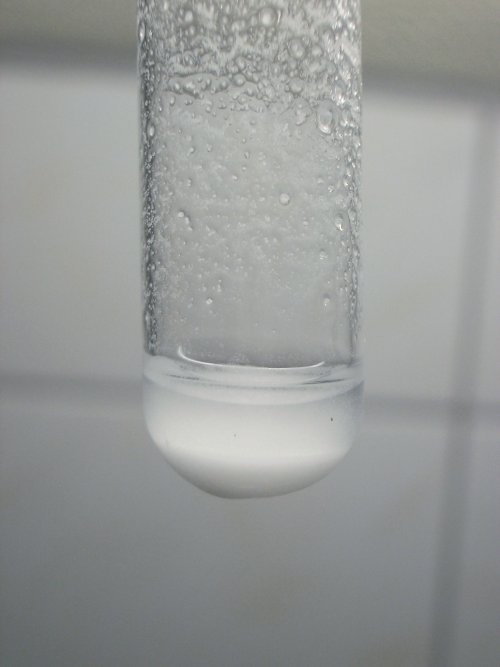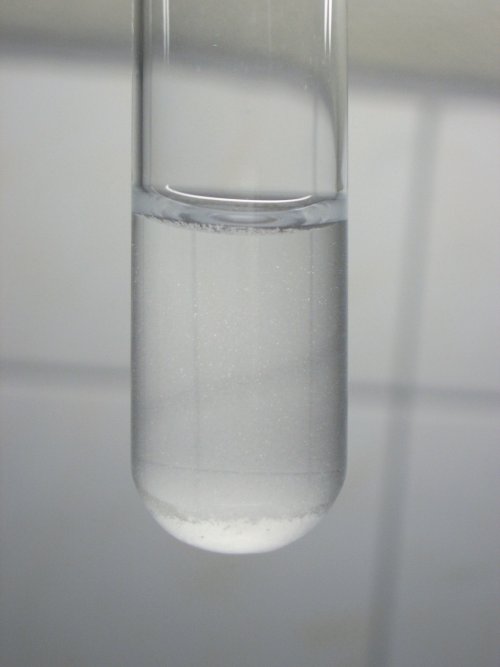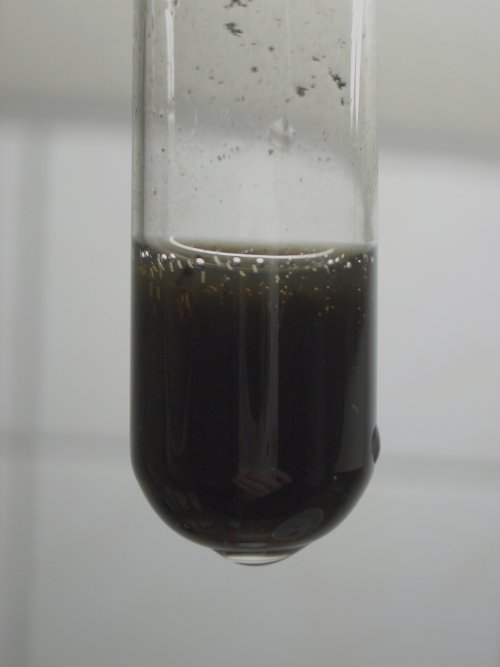


Rhenium chemistry, reduction with sulfite
In this sub-page of the rhenium chemistry, the reaction of perrhenate with sulfite is explored under acidic conditions. This experiment shows that perrhenate is not reduced by sulfite or sulphur dioxide.
![]()
When potassium metabisulfite is added to a solution of perrhenate, then the solution does not change color. It remains colorless. Part of the metabisulfite dissolves and a strong smell of sulphur dioxide can be observed. Apparently, sulphur dioxide is not capable of reducing perrhenate in strongly acidic liquids.

 In this experiment, a solution with approximately 15% HCl
by weight, some nitric acid and perrhenate is used as a starting point. This is
a colorless solution. To this, some solid potassium metabisulfite is added. The
result is a still colorless liquid with a lot of solid matter in it. This is
shown in the left picture.
In this experiment, a solution with approximately 15% HCl
by weight, some nitric acid and perrhenate is used as a starting point. This is
a colorless solution. To this, some solid potassium metabisulfite is added. The
result is a still colorless liquid with a lot of solid matter in it. This is
shown in the left picture.
On dilution with water, the situation does not become much different. The liquid still remains colorless. What is remarkable, however, is that even with quite some water added, there still remains some undissolved solid. Is this potassium perrhenate? This is shown in the right picture above.
The colorless liquid above the white solid is decanted
into a separate test tube. To the white solid some water is added. When this is
done, all of the solid dissolves and a colorless liquid is obtained. To this
liquid a small
 amount of solid sodium borohydride is added. This results in
immediate formation of a black compound and evolution of some gas. A strong
smell of hydrogen sulfide can be observed. The borohydride reduces sulphur
dioxide to hydrogen sulfide.
amount of solid sodium borohydride is added. This results in
immediate formation of a black compound and evolution of some gas. A strong
smell of hydrogen sulfide can be observed. The borohydride reduces sulphur
dioxide to hydrogen sulfide.
To the liquid, decanted into a separate test tube, which is quite acidic and has a strong smell of sulphur dioxide, also some sodium borohydride is added. This results in a very vigorous evolution of a colorless gas. This is due to decomposition of the borohydride in the strongly acidic liquid. Besides this, a strong smell of hydrogen sulfide can be observed and the liquid again becomes turbid and black at once.
What is the black compound? Is this Re2S7 or ReS2?
back to main rhenium experiment